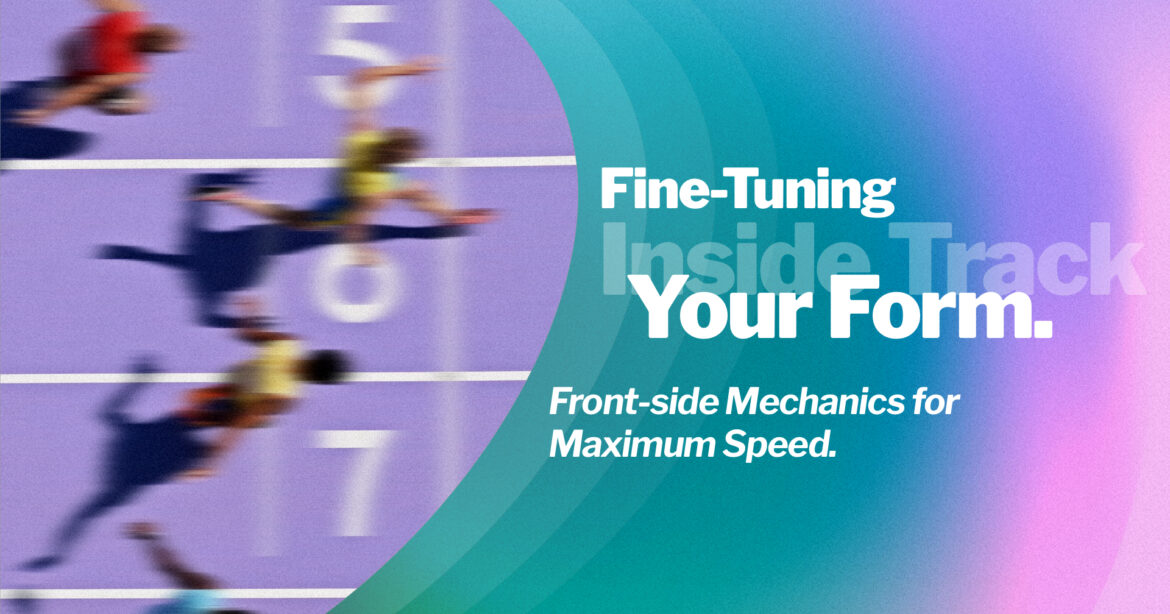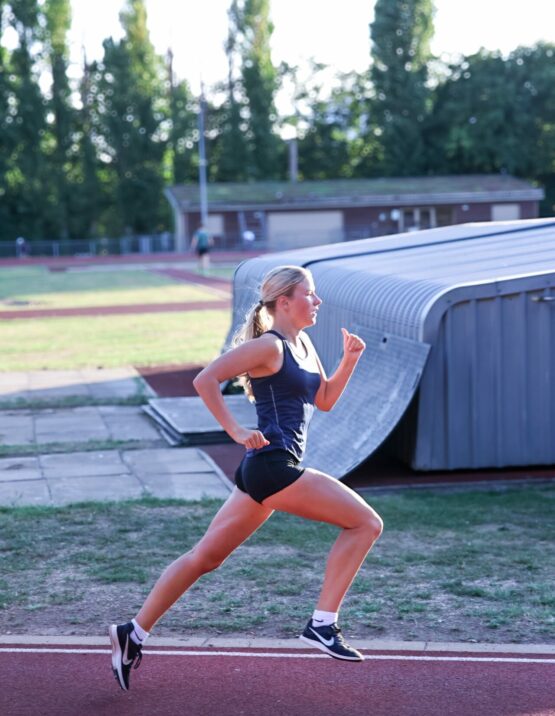Story By Bjorn Jansen
Speed isn't just about raw power; it's about precision. Every stride, arm swing, and foot placement is crucial in maximising efficiency and acceleration. When your front-side mechanics are correct, you move forward, conserve energy, and reduce the risk of injury.
At SpeedPro, we focus on the technical details that separate fast athletes from truly elite ones. Here's how refining your front-side mechanics can unlock your maximum velocity.
1. Mastering Acceleration Mechanics
The first 30 metres of a sprint (100m to 400m) set the tone for the entire race. A poor start can leave you playing catch-up, while an explosive, efficient drive phase propels you ahead of the competition.
Key Techniques for a Powerful Start
- Forward Lean: To generate forward momentum, keep your body at a 45-degree angle during the first few steps.
- Powerful Drive: Focus on pushing back rather than stepping forward. Each stride should feel like a forceful extension, with knees driving high and feet striking aggressively behind the hips.
- Arm Action: Drive your arms powerfully from cheek to hip (elbows pumps); a fast, controlled arm swing fuels acceleration.
SpeedPro Drill: Sled sprints – Sprinting with light resistance reinforces proper drive mechanics and strengthens acceleration power.
2. Optimising Maximum Velocity Mechanics
Once you hit top speed, maintaining optimal form is the key to sustaining velocity. Many sprinters lose time due to inefficient technique, wasting energy and slowing down prematurely.
Key Techniques for Maximum Speed
- Upright Posture: Transition from the forward lean of acceleration into a tall, upright position. Keep your head neutral, eyes forward, and shoulders relaxed.
- Knee Drive & Front-Side Mechanics: Focus on lifting the knee to hip height, with the foot dorsiflexed (toes up) for an efficient, explosive stride.
- Foot Strike: Land directly under your centre of mass to reduce braking forces and maximise stride efficiency.
- Arm Control: Keep your arms moving at 90 degrees, driving forcefully but smoothly in sync with your legs.
SpeedPro Drill: A-Skips & Bounding – Reinforces high knee lift, foot positioning, and efficient power application.
3. Minimising Deceleration & Late-Race Fatigue
Even the best sprinters slow down in the final 20-30 metres, but those who maintain their form the longest finish strongest.
Key Techniques to Reduce Speed Loss
- Stay Relaxed: Tension wastes energy. Keep your jaw, hands, and shoulders loose and controlled.
- Maintain Stride Length & Frequency: As fatigue sets in, don't overstride; instead, keep turnover high and mechanics crisp.
- Breathe Rhythmically: Proper breathing delays fatigue and sustains power output.
SpeedPro Drill: Flying 30s – Sprinting at full speed over 30 metres trains late-stage mechanics and teaches relaxation under pressure.
Unlock Your Full Potential with SpeedPro
An athlete's success isn't just about raw strength, technical precision, and efficiency. By refining your form, you'll accelerate faster, hit higher speeds, and maintain power longer.
At SpeedPro, we use expert coaching, video analysis, and targeted drills to perfect your mechanics and shave crucial tenths off your time.
Ready to be at your fastest? No matter the distance, Fine-tune your form with SpeedPro.




